Hyundai Tucson vs Suzuki Jimny - Differences and prices compared
Costs and Efficiency:
Price and efficiency are key factors when choosing a car – and this is often where the real differences emerge.
Suzuki Jimny has a noticeable advantage in terms of price – it starts at 25300 £, while the Hyundai Tucson costs 30600 £. That’s a price difference of around 5357 £.
Fuel consumption also shows a difference: Hyundai Tucson manages with 1 L and is therefore convincingly more efficient than the Suzuki Jimny with 7.70 L. The difference is about 6.70 L per 100 km.
Engine and Performance:
Power, torque and acceleration say a lot about how a car feels on the road. This is where you see which model delivers more driving dynamics.
When it comes to engine power, the Hyundai Tucson has a decisively edge – offering 252 HP compared to 102 HP. That’s roughly 150 HP more horsepower.
In acceleration from 0 to 100 km/h, the Hyundai Tucson is decisively quicker – completing the sprint in 7.90 s, while the Suzuki Jimny takes 12.80 s. That’s about 4.90 s faster.
In terms of top speed, the Hyundai Tucson performs evident better – reaching 204 km/h, while the Suzuki Jimny tops out at 145 km/h. The difference is around 59 km/h.
There’s also a difference in torque: Hyundai Tucson pulls clearly stronger with 379 Nm compared to 130 Nm. That’s about 249 Nm difference.
Space and Everyday Use:
Beyond pure performance, interior space and usability matter most in daily life. This is where you see which car is more practical and versatile.
Seats: Hyundai Tucson offers convincingly more seating capacity – 5 vs 2.
In curb weight, Suzuki Jimny is noticeable lighter – 1165 kg compared to 1542 kg. The difference is around 377 kg.
In maximum load capacity, the Hyundai Tucson performs significantly better – up to 1799 L, which is about 936 L more than the Suzuki Jimny.
When it comes to payload, Hyundai Tucson significantly takes the win – 545 kg compared to 270 kg. That’s a difference of about 275 kg.
Who comes out on top?
Overall, the Hyundai Tucson shows itself to be outperforms in nearly all aspects and secures the title of DriveDuel Champion.
It convinces with the more balanced overall package and proves to be the more versatile choice for everyday use.
 @ Hyundai Motor Company
@ Hyundai Motor Company
Hyundai Tucson
Costs and Consumption
View detailed analysis
Engine and Performance
View detailed analysis
Dimensions and Body
View detailed analysis
Hyundai Tucson
Hyundai Tucson marries bold, sculpted looks with a clever, roomy cabin that feels smarter than its price tag suggests. It's composed on the road, easy to live with day-to-day, and a sensible choice for buyers who want SUV style without the showroom theatrics.
details @ Hyundai Motor Company
@ Hyundai Motor Company
 @ Hyundai Motor Company
@ Hyundai Motor Company
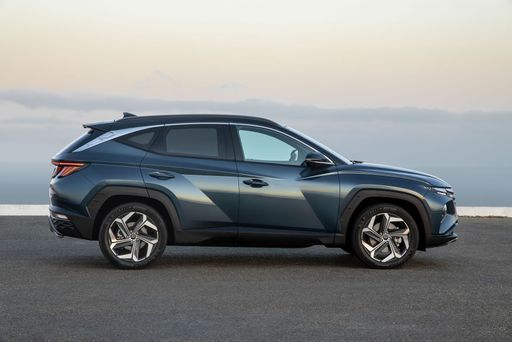 @ Hyundai Motor Company
@ Hyundai Motor Company
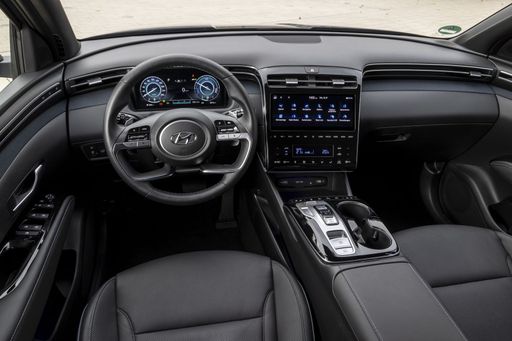 @ Hyundai Motor Company
@ Hyundai Motor Company
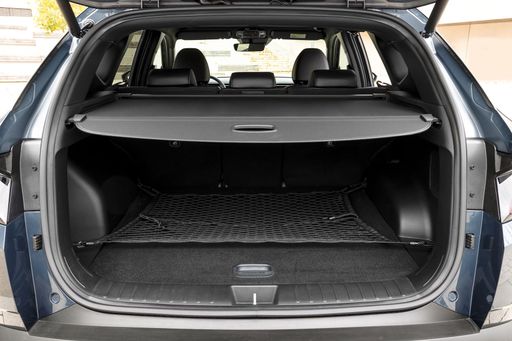 @ Hyundai Motor Company
@ Hyundai Motor Company
Suzuki Jimny
Brimming with raucous charm and unabashed off-road spirit, the Suzuki Jimny makes light work of rough tracks while remaining surprisingly at home in city streets. It's a cheeky, no-nonsense companion for buyers who prefer character over conformity — think go-anywhere attitude in a pocket-sized package.
details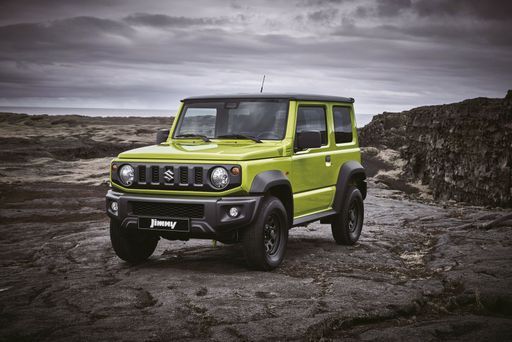 @ Suzuki Motor Corporation
@ Suzuki Motor Corporation
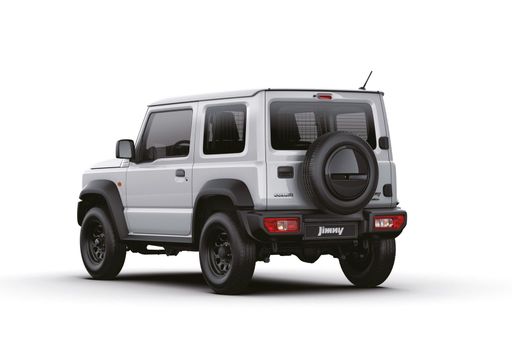 @ Suzuki Motor Corporation
@ Suzuki Motor Corporation
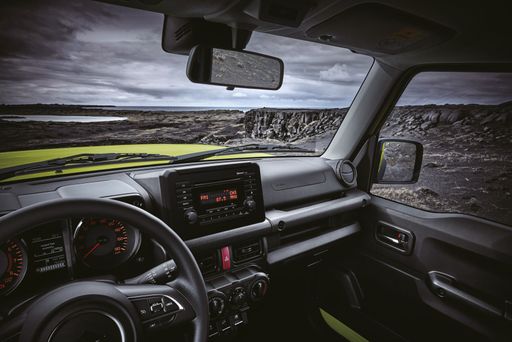 @ Suzuki Motor Corporation
@ Suzuki Motor Corporation
 @ Suzuki Motor Corporation
@ Suzuki Motor Corporation
 @ Hyundai Motor Company
@ Hyundai Motor Company
|
 @ Suzuki Motor Corporation
@ Suzuki Motor Corporation
|
|
|
|
Costs and Consumption |
|
|---|---|
|
Price
30600 - 46300 £
|
Price
25300 - 27700 £
|
|
Consumption L/100km
1 - 7.6 L
|
Consumption L/100km
7.70 L
|
|
Consumption kWh/100km
-
|
Consumption kWh/100km
-
|
|
Electric Range
64 - 70 km
|
Electric Range
-
|
|
Battery Capacity
-
|
Battery Capacity
-
|
|
co2
22 - 172 g/km
|
co2
173 g/km
|
|
Fuel tank capacity
42 - 54 L
|
Fuel tank capacity
40 L
|
Dimensions and Body |
|
|---|---|
|
Body Type
SUV
|
Body Type
Off-Roader
|
|
Seats
5
|
Seats
2
|
|
Doors
5
|
Doors
3
|
|
Curb weight
1542 - 1889 kg
|
Curb weight
1165 kg
|
|
Trunk capacity
546 - 620 L
|
Trunk capacity
-
|
|
Length
4510 - 4535 mm
|
Length
3645 mm
|
|
Width
1865 mm
|
Width
1645 mm
|
|
Height
1650 mm
|
Height
1705 mm
|
|
Max trunk capacity
1721 - 1799 L
|
Max trunk capacity
863 L
|
|
Payload
523 - 545 kg
|
Payload
270 kg
|
Engine and Performance |
|
|---|---|
|
Engine Type
Diesel MHEV, Plugin Hybrid, Petrol, Full Hybrid
|
Engine Type
Petrol
|
|
Transmission
Automatic, Manuel
|
Transmission
Manuel
|
|
Transmission Detail
Dual-Clutch Automatic, Automatic Gearbox, Manual Gearbox
|
Transmission Detail
Manual Gearbox
|
|
Drive Type
Front-Wheel Drive, All-Wheel Drive
|
Drive Type
All-Wheel Drive
|
|
Power HP
136 - 252 HP
|
Power HP
102 HP
|
|
Acceleration 0-100km/h
7.9 - 11.6 s
|
Acceleration 0-100km/h
12.80 s
|
|
Max Speed
180 - 204 km/h
|
Max Speed
145 km/h
|
|
Torque
250 - 379 Nm
|
Torque
130 Nm
|
|
Number of Cylinders
4
|
Number of Cylinders
4
|
|
Power kW
100 - 185 kW
|
Power kW
75 kW
|
|
Engine capacity
1598 cm3
|
Engine capacity
1462 cm3
|
General |
|
|---|---|
|
Model Year
2024 - 2025
|
Model Year
2021 - 2024
|
|
CO2 Efficiency Class
E, B, F, D
|
CO2 Efficiency Class
F
|
|
Brand
Hyundai
|
Brand
Suzuki
|
What drive types are available for the Hyundai Tucson?
Available configurations include Front-Wheel Drive or All-Wheel Drive.
The prices and data displayed are estimates based on German list prices and may vary by country. This information is not legally binding.
